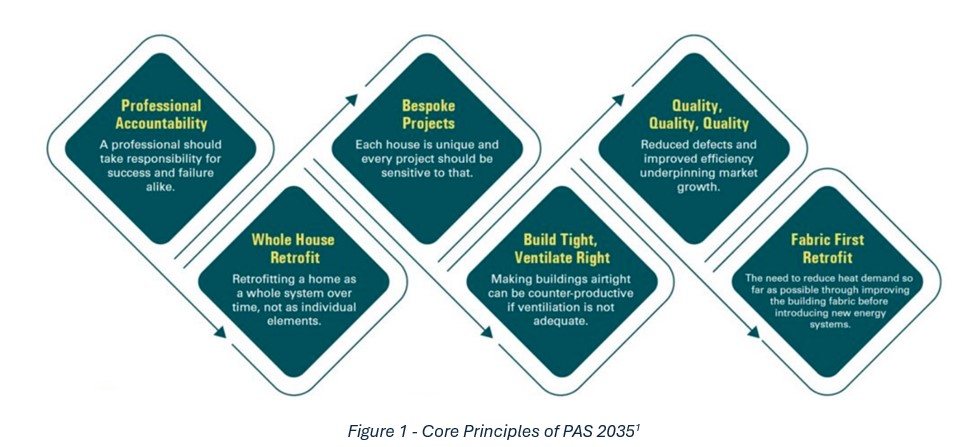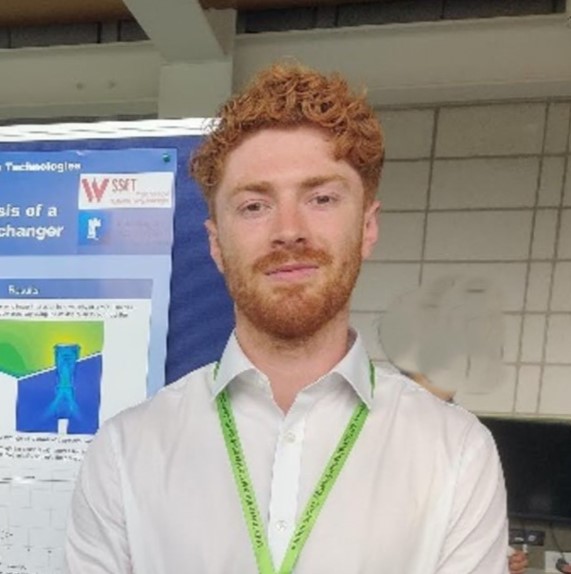Arthian tells us what we need to know: PAS 2035 and 2038
Publicly Available Standard (PAS) 2035 and 2038 are established frameworks for retrofitting domestic and commercial spaces, developed in response to the threat of climate change, the need for the UK to rapidly decarbonise, and the structural issues encountered throughout many retrofit projects which result in poor results.
With approximately 29 million domestic and 2 million non-domestic buildings, nearly 40% of the UK's emissions are attributed to the built environment. These frameworks are relevant and applicable to any scheme aiming to improve energy efficiency, particularly those that are publicly funded.
The PAS frameworks aim to reduce the energy demand associated with the UK’s old and inefficient building stock by clearly defining processes for designing and installing energy efficiency measures from inception to completion, applying a whole-building approach that prioritises reducing energy demand, typically starting with fabric improvements where feasible.
Both PAS 2035 and 2038 provide significant benefits to the building owner, ensuring that work is completed consistently and effectively across a range of buildings, avoiding any unintended consequences of the works carried out. This results in the effective reduction in energy demand and improved energy efficiency whilst decarbonising buildings services and reducing the lifetime emissions of the building. Within the PAS documentation are best practice guidance about how to approach retrofits, requirements for coordination, completing whole-dwelling assessments, and design, as well as indications of which standards should be referred to throughout the process.
PAS 2035 and 2038 apply to domestic and commercial properties respectively. PAS 2035 covers any buildings that are used as private living accommodations by one or more households, with additional considerations given to high-rise, traditional, and protected buildings. PAS 2038 covers non-domestic buildings that have commercial, institutional, or public uses, as well as any communal or shared spaces within accommodation buildings, such as stairwells, hallways, lobbies, or shared heating systems, meaning that in many buildings both PAS 2035 and 2038 will be applicable. While PAS 2038 applies to all non-domestic buildings, a proportionate approach is recommended for simpler, smaller buildings. In some funding programs, PAS 2035 may be applied to small non-domestic buildings under 500 m², though this is not a default rule within the PAS itself.
Oversight and responsibility are determined differently between PAS 2035 and 2038. Clearly defined roles within PAS 2035 identify and apply responsibility at each stage of the retrofit process:
- Retrofit Assessor: Conducts comprehensive assessments of dwellings to identify suitable energy efficiency measures.
- Retrofit Coordinator: Oversees the entire retrofit process, ensuring compliance with PAS 2035 and acting as the main point of contact for clients.
- Retrofit Designer: Develops detailed plans for implementing energy efficiency measures.
- Retrofit Installer: Carries out the installation of retrofit measures as per the design specifications.
- Retrofit Evaluator: Monitors and evaluates the performance of retrofit measures post-installation, used in projects deemed high-risk.
In contrast, roles within PAS 2038 are more flexible, reflecting the variation in complexity of the buildings encountered. The project is largely overseen by the Lead Assessor, who takes responsibility for working with the client to identify and deliver the objectives and desired outcomes of the project against the available budget, working within any constraints imposed through planning, regulatory, conservation, or environmental considerations. They are also responsible for working within the constraints imposed by the building itself, which may be architectural, structural, engineering, maintenance, or health and safety related.
Taking a whole building approach ensures that all applicable energy measures work harmoniously to generate the intended benefits. Potential Energy Efficiency Measures (EEMs) include improvements increasing insulation levels and reducing thermal bridging, making spaces more airtight whilst reducing heat losses from ventilation by using heat exchangers, introducing more efficient heating and cooling systems with smart controls, on-site energy storage, fabric resilience, and overheating prevention.
To ensure that the maximum benefit is gained from following PAS 2035 and 2038, monitoring and evaluation are included in both. This ensures that the agreed outcomes have been achieved, the client is satisfied with the work carried out, and any issues or challenges are reported so that changes can be made to any future work. By continuing to monitor the performance of any changes made to the building, improvements can be made to the initial modelling process, helping to gain a better understanding of the accuracy of predictions prior to installation.
In summary, PAS 2035 and 2038 provide clear, reliable frameworks for delivering high-quality retrofits across domestic and non-domestic buildings. By prioritising whole-building performance, risk management, and long-term outcomes, they help ensure retrofit projects are consistent, effective, and aligned with the UK’s drive toward net zero.
Arthian are one of a number of companies appointed for the Retrofit and Decarbonisation (N9) Framework developed by the South West Procurement Alliance, under which fall PAS 2035 and 2038. The framework supports local authorities, housing associations, education, and other public sector organisations to deliver energy efficiency and decarbonisation measures by providing access to appointed companies capable of supporting retrofit and decarbonisation work on a national, regional, and local level.


